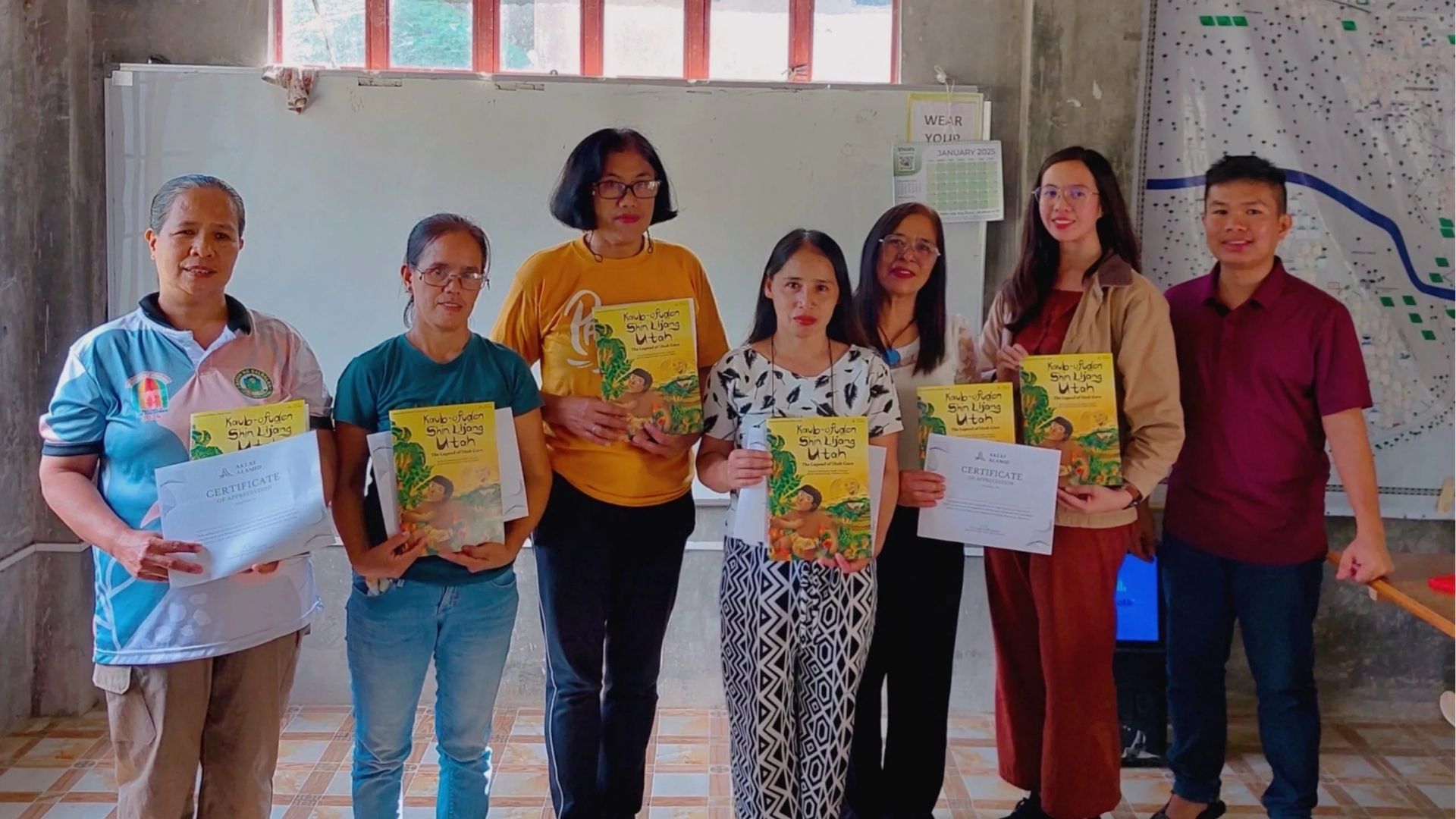Who didn’t love story time when you were a kid?
Baguio-based artist Danielle Florendo is the first author-illustrator to release a children’s book based on a Kalinga province folk story, which is also written in their local language.
The Legend of Uta Cave (Kaub-Ofuden Shin Lijang Uta) is Florendo’s latest project, which delves deeper into her roots as an Ibaloi native and pays homage to the rich tapestry of indigenous Filipino narratives.
The Legend of Uta Cave tells a story of a young boy who can see spirits and his encounter with the mischievous God of the Mountains, a rock with an unusual name.
Indigenous legends, folklore, and stories are often told through oral means, preserving them through the passing of each generation. However, some Filipino native languages have been slowly dying due to lack of speakers or knowledge on how to speak them, and through the release and promotion of “The Legend of Uta Cave,” it promotes conversation surrounding indigenous languages even in non-native speakers.
“The Legend of Uta Cave” is more than just a story; it’s a bridge connecting the younger people to their ancestral heritage. By illustrating and narrating the tale in the native tongue, Florendo ensures that the cultural essence and linguistic nuances are conserved that foster a deeper-found appreciation among readers.
Florendo is a fine arts lecturer at the University of the Philippines Baguio and illustrated a number of books such as “Si Fatima at ang Kwintangan Kayu” by Christine Magpile, Balitanay’s Laktob by Dr. Analyn Amores, and the recently released “Si Migoy, Ang Batang Tausug” by Nelson Canlas and Dr. Isabel Cabel Moreno-Go.
Florendo’s dedication to authenticity led her to collaborate closely with the indigenous people of Balbalan, Kalinga. The book took three years to develop. She travelled from Baguio to Balbalan, Iloilo, four times a year, the route consisting of several types of transportation: first a bus, then a jeepney ride, and even an hour-long ride to reach the houses of the locals.
Although there was an initial pushback from the community to allow her to retell the story—even if most of the elders have already given their approval—the partnership ensured that the story would remain true to its origins and resonate with the community it represents. These collaborations highlight the importance of involving local voices, most especially during the storytelling process, ensuring that all elements of the culture are correct and treated with utmost respect.
Florendo’s book serves as a beacon for cultural preservation in a time when modern mainstream narratives have gained more patronage. By bringing Kalinga folklore to the forefront, she enriches Philippine literature and also educates readers on the diverse traditions and histories within the country.








